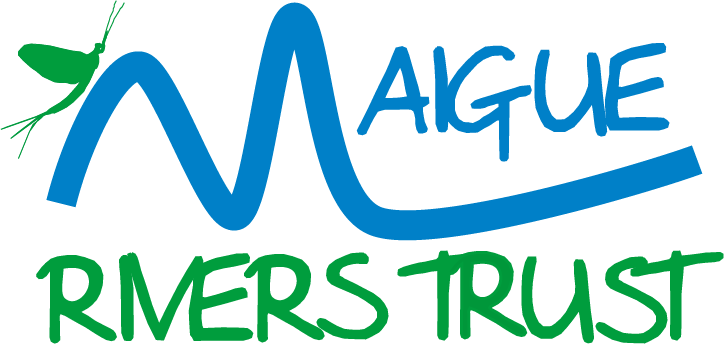Himalayan Balsam (Impatiens glandulifera)
A non-native and invasive plant that spreads along..
A non-native and invasive plant that spreads along..
Mayflies are found in rivers and lakes thoughout Ireland. The name is misleading: one species the very large and conspicuous Green Drake Mayfly (Ephemera danica) appears on lakes and rivers in May around the time that hawthorn is in bloom, but there are many other smaller species that can be seen thoughout the year. In the Maigue catchment rivers, the Large Dark Olive mayfly (Baetis rhodani) is the first to appear as an adult in February, followed by the Small Dark Olive, Iron Blue, Medium Olive, Green Drake, Yellow May Dun, Fisherman’s Curse and Blue-Winged Olive. Mayflies have a complex life cycle, which involves a larval stage that lives on the river or lake bed for one or more years, and a short-lived, winged, adult stage in which mating and egg-laying takes place. The adult flies are generally olive to yellowish in colour and have a pair of large wings and a pair of smaller..
Sedge flies (or caddis flies) are the adult stage of aquatic insects known as caddis larvae. There are many different species of caddis. Many of them build tubular cases of sand grains of vegetation in which they hide (cased caddis) , while others are “caseless” or..
These are large insects with four pairs of wings, with often with spectacular colours. The Banded Demoiselle damsel fly is common along river banks. The females are metallic green and the males metallic blue. Dragon flies are considerably larger than damsel flies and are mainly found near lakes and ponds. Both have an aquatic larval..
The otter is a carnivore and is an opportunistic feeder, its prey includes- eels, salmonids and crayfish. In spring, otters often eat a lot of frogs. Otters can be difficult to see, but you can tell if they are using an area as they mark their territory by leaving ‘highly scent ’spraints or droppings (marking their territory) and by their five toed foot prints. Otters spend most of their time on land on land but are seldom far from water. They can be found along the whole of the river even in the saltwater of the estuary. If an otter has been swimming in salt water they will have then find some freshwater to rinse off and clean their fur..
The mink is a carnivore that is closely related to the otter but it is an invasive species that was introduced to Ireland in the 1950’s as accidental escapees from fur farms. Minks can sometimes be confused with otters, but they are a much smaller animal. Mink can be found along the whole of the Maigue. Mink are a big threat to ground-nesting..
Grey seals and common seals can often be seen in the estuary of the R. Maigues and sometimes further..
If you are by the river at dusk you may see a bat flying very close to the waters surface; this is most likely Daubenton’s Bat. The bat uses its large feet to catch insects like midges and sedge (caddis) flies. It flies with it tail membrane very close to the surface of the water to disturb the insects then it crabs them with its feet. This behaviour is known as..
Atlantic Salmon are the most iconic of the Maigue fish. Salmon spend one more years feeding at sea before returning to spawn in the rivers where they were born. Young salmon grow to juveniles for a year or more before migrating to sea again as smolts. Salmon returning to their home river after two or more years at sea mostly return in spring or early summer and are bigger than salmon that return in mid-summer and autumn; these latter are known as grilse or peel. The majority of salmon returning to the Maigue are spring salmon. Most of the salmon die after spawning but a number may return to the sea (as kelts) in spring and may return to spawn a second or even a third time. Most of these are hen..
Brown trout are Ireland’s only native species of trout. Brown trout live in all catchments in Ireland, provided the water quality is suitable and there are spawning areas. Like salmon, trout require very good water quality. They are present in the main Maigue channel and tributaries but are absent or scarce in much of the Maigue headwaters and in some of the tributaries, probably because of poor water quality there. So called “slob trout”, or brown trout that live in the brackish tidal waters of estuaries, can be found downstream of Adare. Brown trout do not naturally occur in any of the lakes in the catchment because none have feeder streams with suitable spawning habitat for brown trout or salmon. Bleach Lough Anglers stock their lake with Brown trout and with rainbow trout, a non-native..

Recent Comments